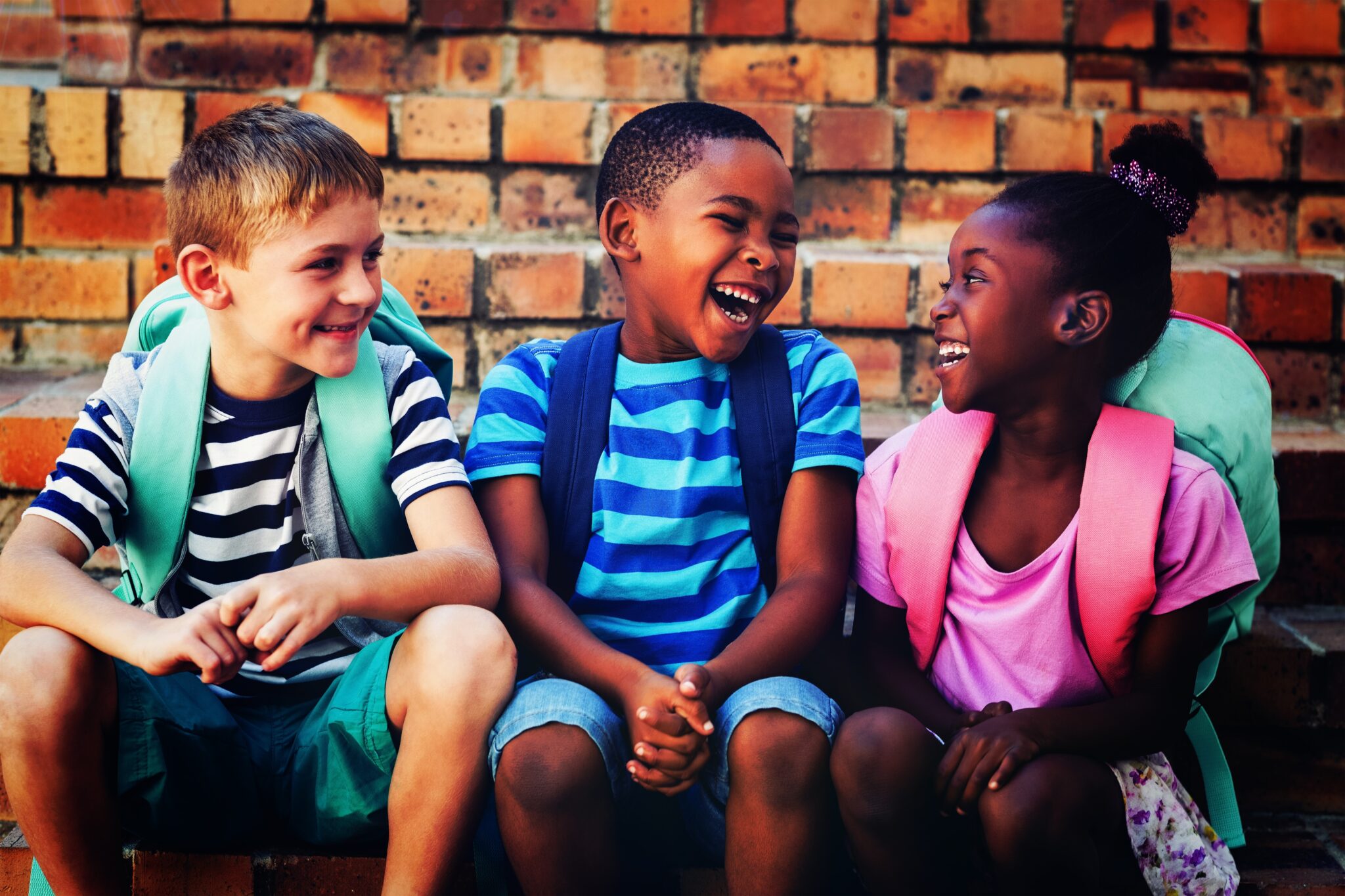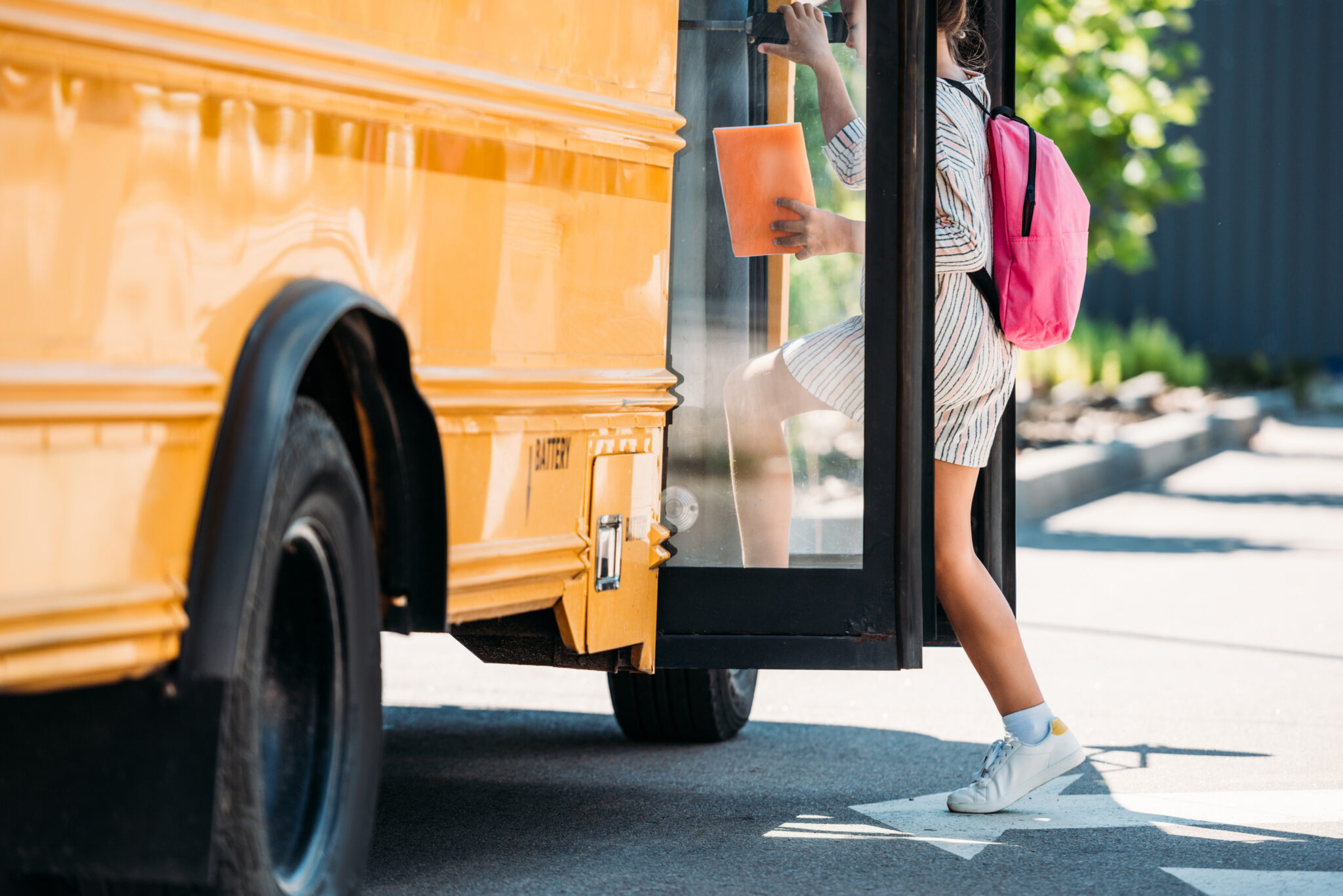Is the glass half full or half empty?
It all depends. Some might even describe the glass as “Always full—filled with air and water, but always full.” So it is with twice-exceptional children. Often, teachers and parents can appear to be describing completely different children, depending on which aspect of the child they are describing. When a child is gifted with a disability, teachers and parents can either take a deficit view (as exemplified by special education), a talent development view (as exemplified by gifted education), or a Whole Child view, which requires significant collaboration on both sides. Each view has substantial implications, not only for programming decisions, but for a child’s self-esteem, educational choices, and future career.
Having a disability while simultaneously being gifted is not a new concept (Trail, 2010). Walt Disney was famously told that he had “no good ideas” and Edison was sent home from school because he was “hopeless.” More recently, Justin Timberlake has been diagnosed with ADHD and Daniel Radcliffe has dyspraxia, a motor planning disability. Our world would be very different if education had focused only on their area of disability and not developed their prodigious talents. However, it is almost impossible to separate one aspect from the other; their disability is often the catalyst for how they use and develop their ability. Daniel Radcliffe became an actor because he felt so hopeless at school. Rather than quash his need to move, Justin Timberlake developed dance moves that changed pop music. Clearly, Disney’s attention to detail led to a creative empire, while Edison’s curiosity led to significant discoveries. Disability and giftedness are not separate from each other, but rather integrally connected.
Definition and Needs of Twice-Exceptional Students
Recently, the Twice-Exceptional National Community of Practice (Baldwin, Baum, Pereles, & Hughes, 2015), a collaboration of individuals representing numerous organizations, including the National Association for Gifted Children (NAGC) and the Council for Exceptional Children (CEC), released a definition of twice-exceptional that states:
Twice exceptional (2e) individuals evidence exceptional ability and disability, which results in a unique set of circumstances. Their exceptional ability may dominate, hiding their disability; their disability may dominate, hiding their exceptional ability; each may mask the other so that neither is recognized or addressed.
2e students, who may perform below, at, or above grade level, require the following:
- Specialized methods of identification that consider the possible interaction of the exceptionalities;
- Enriched/advanced educational opportunities that develop the child’s interests, gifts, and talents while also meeting the child’s learning needs; and
- Simultaneous supports that ensure the child’s academic success and social-emotional well-being, such as accommodations, therapeutic interventions, and specialized instruction.Working successfully with this unique population requires specialized academic training and ongoing professional development.
(p. 206)
What this means beyond the definition is that teachers and parents must understand both the nature of the disability and the nature of the giftedness in order to instruct, counsel, and support gifted students with disabilities. In order to see the glass as “all full,” they must understand the issues and constructs of the two fields.
Redefining and Redesigning Disability
The term disability is rooted in a deficit model. In the recent neurodiversity movement, autistic people and those with other exceptionalities are fighting back against a deficit viewpoint (Silberman, 2015). They perceive that they do not need education to be “normal” but that society needs education in order to perceive that differences are not deficits. To appreciate neurodiversity means that society recognizes that neurological systems fall within a wide range, much like race, culture, and height differences are merely differences and not disabilities by their mere fact of being different. They resist the person-first language concept because they note that their differences define who they are, not something that they have and can shrug off. However, even the neurodiversity movement, while celebrating differences, is emphasizing the need for that educational door to become wider and open to all—not limited by definitions.
For a twice-exceptional child, the disability must become a component of the talent development. With the concept of neurodiversity shifting the understanding of disability, the deficits can be examined in light of how they can be accommodated, or even adapted, in the talent development process. A student who needs to move may be able to take that learning need and develop it as a strength, such as Justin Timberlake or Michael Phelps. A student with poor social skills who struggles to find the right thing to say may be able to find success through acting in which social interactions are truly scripted, such as Darryl Hannah and Dan Aykroyd. A student with poor reading skills may be able to develop excellent writing skills, such as Philip Schultz who won the 2008 Pulitzer Prize for Poetry, despite having dyslexia. Individuals examine their area of challenge using their abilities and turn the very disability itself into an expression of strength. In a positivistic view point of disability, the goal is to identify the context under which a characteristic becomes a disability and to moderate the environment so that the same characteristic can be expressed as a strength, or at the very least, not a handicap (Armstrong, 2012). The goal is to adapt the circumstances and the demands so that the disability becomes an ability.
Hugh Herr (2010), the Director of the Bionics Laboratory at the Massachusetts Institute of Technology, stated, “There are no disabled people in the world, only disabled technology because of poor design” (para. 2). Himself a user of prosthetic legs, he noted that with the design to create and the technology to build, any disability can be made irrelevant. After all, Attention Deficit Disorder didn’t exist as long as there were environments available to students where they could move and be active. It wasn’t until our culture required all students to sit for long periods of time and focus on one task at a time that those with an inability to do so were deemed to have a disability. Although a person may have an impairment, it is only when she cannot perform a life function that it becomes a disability. When an individual is prevented from participating in her environment, then a disability becomes a handicap (Carter, 2016).
Universal Design for Learning
The concept of Universal Design (UD) is rooted in a history of creating architectural spaces accessible for all. In an UD space, there are ramps, elevators, wide doorways, and appropriate acoustics so that people with physical and sensory impairments can function and participate in the purpose of the space. And as anyone who has used a ramp with a heavy cart can tell you, although a feature of an architectural design may be essential for one group of people, it can benefit all people who use that space. The goal of UD is to create an open and accessible space in such a way that one group of people is not singled out but rather is integrated into the functionality of the space.
Universal Design for Learning (UDL) takes a similar approach and uses the brain as the foundational architecture (Rose, Meyer, Strangman, & Rappolt, 2002). UDL “is a set of principles for curriculum development that give all individuals equal opportunities to learn” (Center for Applied Technology, 2013, para. 1). Within UDL, a variety of methods are used to create opportunities for students to engage with material. This engagement process alerts the neurological networks so that students can and do pay attention to the learning task. The key is the multiple methods of engagement to be used; what works for one student may not work for another. But attracting a child’s attention and interest is the first step. Building on neural networks, teachers and curriculum designers plan for multiple methods of representation so that students with disabilities can make connections between the material and what they already know. It is critical in UDL to understand that not all students have the same context for learning and that connections must have meaning to them, no matter their level of cognitive functioning.
The last step in creating a UDL-designed curriculum or experience is allowing the student numerous methods of expression so that they can draw upon their critical and creative thinking abilities. By creating multiple methods of expression, students are able to demonstrate their learning in ways not constrained by their impairment. UDL is not a work around or an accommodation. It is a fundamental design process of reconstructing the curriculum so that children’s learning neural networks can be activated, and they have multiple options in how they can engage, represent, and display their knowledge. These multiple options are clearly not limited only to students with disabilities. This design process allows all to engage and learn, but does not dictate what the actual curriculum is—only how to provide access to it.
Developing Talents
UDL is a curriculum design process that bears similarities to Joyce VanTassel-Baska’s (2011) Integrated Curriculum Model (ICM). In her model, however, the process of instruction begins with the curriculum and the resultant concepts, rather than the cognitive processes. The role of the actual curriculum is much more a central role in gifted education rather than the access to the content or the learning process (Tomlinson, 2004). What students learn is critical, as well as how they engage with it. The actual content, the thinking processes we expect of gifted students, and the products that we expect them to develop are more clearly defined. It isn’t only that they engage but how they engage that is the focus of gifted education. The goal of gifted education is to promote accelerated and enriched thinking with the content as the measure. Recent curriculum projects from the National Association for Gifted Children in math, science, and language arts (Hughes, Kettler, Shaunessy-Dedrick, & VanTassel-Baska, 2013; Johnsen, Ryser, & Assouline, 2014) required that the material be adapted to include:
- creativity,
- critical thinking,
- advanced content and concepts, and
- integration between content areas
Access is defined as an identification issue or a resources issue but not as a learning issue. Recent work on the National Gifted Education Standards (Johnsen et al., 2016) emphasizes the need to identify talents and gifts in diverse populations, but the ability, or lack of ability, of the student to access the learning process is rarely a factor in redesigning curriculum for gifted students. The viewpoints of half empty and half full are far-reaching in their implications.
Designing Experiences for Twice-Exceptional Learners
What is clear in designing experiences for twice-exceptional learners is that neither approach contradicts the other; it is indeed possible to have a glass all full viewpoint. Curriculum experiences can be designed to be accessible and high level. Students can have multiple ways of engaging, representing, and demonstrating their thinking and use accelerated and enriched materials. Figure 1 shows the relationship between content, thinking skills, and accessibility needs that can exist for a gifted student with disabilities.
Questions that might be asked during curriculum development might include:
- Are there multiple ways of presenting information to students that will attract and keep their attention and interest?
- Is the content that is being used high level and challenging for this student? Are the concepts integrated?
- Are the ideas connected to experiences that the student already knows or can do? Have multiple methods of connections been made?
- How does this content further develop the understanding? How does this learning provide advanced or enriched opportunities?
- Are there multiple ways of expressing the outcome of the thinking process?
- Does the final product require advanced thinking skills and promote creativity or critical thinking?

Creating this experience, however, requires that collaboration occur between special education and gifted education. Collaboration can be at the state level, the district level, the programmatic level, or even at the instructional level (Hughes, 2017). It is not enough to understand that there are differences; each specialist must understand the very real concerns of the other specialists involved and work toward designing an experience that can allow twice-exceptional children to develop their talents while not allowing their disabilities to impede their access to the experience. By understanding the needs of special education to provide access to the learning of the curriculum and sharing the different, but not contradictory, emphasis of gifted education on the nature of the curriculum, both areas can work to achieve a glass all full education. It is critical to understand that we can reduce the impact of the disability by redesigning the environment, and we can develop the talent by redesigning the task. Then, the child benefits and can begin to see him- or herself as a whole, integrated, complex person.
References
Armstrong, T. (2012). Neurodiversity in the classroom. Alexandria, VA: Association for Supervision and Curriculum Development.
Baldwin, L., Baum, S., Pereles, D., & Hughes, C. (2015). Twice-exceptional learners: The journey toward a shared vision. Gifted Child Today, 38, 206–214.
Carter, S. (2016). Impairment, disability and handicap. Retrieved from http://www.pediatrics.emory.edu/divisions/neonatology/dpc/Impairment%20MX.html
Center for Applied Technology. (2013). About UDL. Retrieved from http://www.cast.org/udl/index.html
Herr, H. (2010, September 21). Dr. Hugh Herr keynote at ESC Boston. Retrieved from http://www.eetimes.com/author.asp?section_id=28&doc_id=1284575
Hughes, C. E. (2017). From cacophony to chorus: Collaborating in a time of multiple standards. In S. K. Johnsen & J. Clarenbach (Eds.), Using the national gifted education standards for pre-K-grade 12 professional development (pp. 53–68). Waco, TX: Prufrock Press.
Hughes, C. E., Kettler, T., Shaunessy-Dedrick, E., & VanTassel-Baska, J. (2013). A teacher’s guide to using the Common Core State Standards with gifted and advanced learners in the English Language Arts. Waco, TX: Prufrock Press.
Johnsen, S. K., Ryser, G. R., & Assouline, S. G. (2014). A teacher’s guide to using the Common Core State Standards with mathematically gifted and talented learners. Waco, TX: Prufrock Press.
Johnsen, S. K., VanTassel-Baska, J., Robinson, A., Cotabish, A., Dailey, D., Jolly, J., Clarenbach, J.D., & Adams, C. M. (2016), Using the National Gifted Education Standards for teacher preparation. Waco, TX: Prufrock Press.
Rose, D. H., Meyer, A., Stragman, N., & Rappolt, G. (2002). Teaching every student in the digital age. Washington, DC: Association for Supervision and Curriculum Design.
Silberman, S. (2015). NeuroTribes: The legacy of autism and the future of neurodiversity. New York, NY: Avery.
Tomlinson, C. A. (2004). How to differentiate instruction in mixed-ability classrooms (2nd ed.). Washington, DC: Association for Supervision and Curriculum Development.
Trail, B. (2010). Twice-exceptional gifted children: Understanding, teaching, and counseling gifted students. Waco, TX: Prufrock Press.
VanTassel-Baska, J. (2011). An introduction to the Integrated Curriculum Model. In J. VanTassel-Baska & C. Little (Eds.), Content-based curriculum for high ability learners (2nd ed., pp. 9–32). Waco, TX: Prufrock Press
Claire E. Hughes, Ph.D., is an associate professor and Chair of Education and Teacher Preparation at the College of Coastal Georgia. Previously, she was Faculty Director of the Special Needs and Inclusion program at Canterbury Christ Church University in England, and a Fulbright Scholar to Greece. She is active in the National Association for Gifted Children and The Association for the Gifted (CEC-TAG) and Teacher Education Divisions (CEC-TED) of the Council for Exceptional Children. She is author of numerous books and chapters, and her research areas include twice-exceptional children—particularly gifted children with autism spectrum disorders—positivistic views of exceptionality, and international education.






